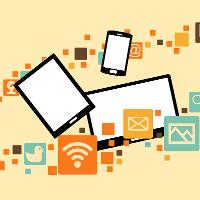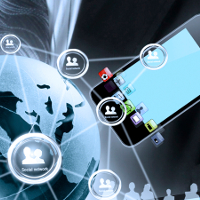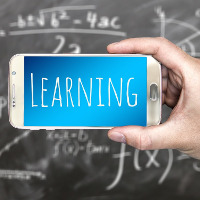What Does The Future Of e-Learning Look Like?

Some say e-learning is on the cusp of something special. We say it's already there. The rumblings of revolution in workplace training aren't just constrained to advanced tech reports anymore - they're a reality. This exciting new chapter of e-learning has officially begun.
Those who have embraced modern e-learning solutions like Learn with Mobile are aware that ‘futuristic features' are now very much accessible. Nonetheless, there's much more on the horizon in the coming months and years. Here, we take a look at how e-learning is set to keep changing for the better.
Experience
Traditional corporate e-learning was a revelation when it was first introduced, but quickly grew tiresome. Many training programmes involved clicking through slides at a gradual pace, full of content that was largely limited to reading material.
The digital age, however, has given rise to training that promises a more memorable and engaging experience - drawing on the latest technological innovations in order to do so.
Games and quizzes are already widely integrated into e-learning platforms. Virtual Reality (VR) technology is also at the heart of some modern training exercises, offering immense new possibilities. With VR, you have the capability to place users in a whole new world distanced from ordinary surroundings - utilising mobile and wearable tech for an intense, vivid educational experience.
Growth
Despite the ever-increasing complexity of technology, the latest training platforms have built-in scalability to accommodate new features and learning content types (like VR) when they emerge. Modern e-learning is designed to grow alongside the tech world, and indeed with the learner themselves.
Microlearning is a perfect example of the way in which platforms are already moulding to specific users. By offering bite-sized chunks of daily education and saving the user's progress along the way (so they can hop back in at any given moment), e-learning facilitates self-development at a suitable pace, with extra modules unlocked when the user requires them.
Customisation and content curation is also set to become bigger, as more power is placed in the user's hands. By searching the content available, they can learn however they choose, focusing on the exercises or course elements that benefit them most.
Connectivity
Another criticism of old e-learning was its exam-style isolation. Participants were often made to sit in a classroom with a computer, clicking in silence, mostly keeping to themselves.
Whilst modern e-learning is more personalised and caters specifically to individual learners, it also facilitates user-to-user interaction - something we're sure to see more of in the future. Through forums, messaging services, and social channels, users will be able to help one another with tips and advice when needed, whereas tutors can host real-time online tutorials, in multiple languages simultaneously .
Hosts can also evaluate participant performance via data analysis, allowing for effective tweaks to the user experience.
Ambidect: Shaping the exciting future of e-learning
Learn with Mobile is one of the driving forces behind the evolution of e-learning in the digital age - opening up new possibilities and removing limitations.
By offering businesses the opportunity to create an advanced, informed training system, Learn with Mobile is fluid and adaptable - ready to accommodate future features when they emerge.
Experience this for yourself today.
If you're looking to educate in a fresh, affordable, and rewarding way, check out fully mobile responsive e-learning solutions using Learn with Mobile. Get started for free right now, or call the Ambidect team on +44 (0)1260 221292 if you have any questions.




























